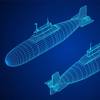Nearly two centuries after Bombay’s famed Wadia family built HMS Minden — the ship on which the American national anthem Star Spangled Banner was written — history will sail a full circle later this month.
The U.S. Navy is all set to hand over Seattle-built USS Trenton, an amphibious transport warship, to the Indian Navy. It will be the first American-made vessel to join India’s growing blue water fleet.
A crew of more than 300 Indian Navy personnel is already training in Norfolk, Virginia, to take charge of Trenton in a formal ceremony on January 17, when the ship will be officially decommissioned from the U.S. Navy. It will then set sail for India, where it is likely to be inducted into the Eastern Naval Command in Visakhapatnam.
When introduced into the Indian Navy in mid-2007, the 17,000-ton Austin-class platform, formally called a Landing Platform Dock or LPD, will be India’s second-largest warship, second only to the 28,000-tonne Hermes-class aircraft carrier INS Viraat.
Built by Lockheed and commissioned in 1971, the amphibious ship has a complement of 28 officers and 480 men, and can transport nearly 1500 marines. Although Trenton cost more than $400 million to build, New Delhi is buying it at a bargain basement price of around $48 million — which includes four mechanised landing craft and other bells and whistles — under a US Foreign Military Sales (FMS) program.
New Delhi believes the ship is good for another 15 years. The Indian Navy is also looking to procure six SH-3 Sea King helicopters to operate from the 173-metre-long vessel that has seen action in Somalia, Liberia and Lebanon among other places, landing US troops and rescuing American citizens.
Indian officials say Trenton, which is expected to be renamed INS Jalashva (Sanskrit for seahorse), will provide the Navy with enhanced amphibious capability. Besides landing troops during war and rescue operations, it can also function as a command and control platform during offshore and mid-sea mishaps.
The Trenton transaction marks an unusual and little known naval connection between two distant countries that are now heading towards a strategic military partnership.
Indian-made ships were frequent visitors to the US in the 18th and 19th century and American sea-farers visited Bombay and Surat to see the Wadias, India’s traditional shipbuilders, at work.
Although a small deal in financial terms, the Trenton transfer is said to presage both greater strategic interplay and military transfers between the US and India. Some Washington pundits see India as an American partner in patrolling the vital sea lanes from the Gulf of Hormuz to the Straits of Malacca.
Source: Times of India
Subscribe for
Maritime Reporter E-News
Maritime Reporter E-News is the maritime industry's largest circulation and most authoritative ENews Service, delivered to your Email five times per week










